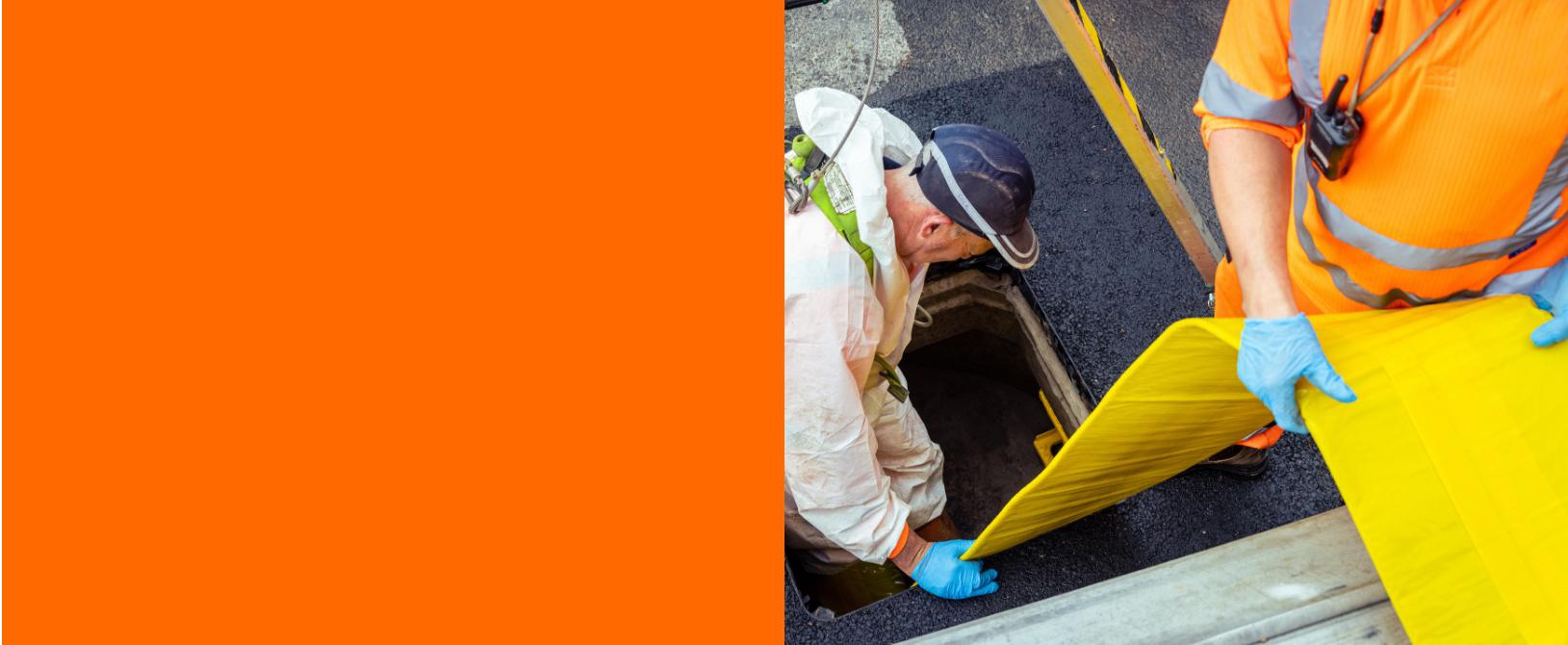What is cured-in-place pipe lining?
Cured-in-place pipe (CIPP) lining rehabilitates and reinforces pipes without excavation. It is the industry standard for restoring underground sewers and pipes due to its low installation cost, ease, and speed. It uses trenchless technology, reducing ancillary requirements like traffic re-routing and security. This doesn’t match page
CIPP lining uses a flexible tube, impregnated with resin, inserted into the pipe and inflated until the resin fuses with the existing pipe wall. The original pipe might be iron, concrete, or ceramic. In all cases, the resin soaks into this material to ensure an impermeable seal. Once in place, the resin is left to cure either at ambient temperature or with hot water or steam. This section is not on page either
McAllister’s cured-in-place lining service
CIPP lining has revolutionised pipe rehabilitation. It requires careful preparation and application, but is far preferable to excavating large sections of damaged pipeline.
McAllister’s cured-in-place lining service
CIPP lining has revolutionised pipe rehabilitation. It requires careful preparation and application, but is far preferable to excavating large sections of damaged pipeline.
Preparing the product
Once on site, McAllister’s technicians prepare a polyester fibre sheet – known as a liner, tube, carrier material, sleeve, or sock – which will serve as a matrix for the new pipe lining. The liner has a thin, exterior coating of polyethylene or polyvinyl chloride which will serve as the smooth, interior lining of the rehabilitated pipe. Our technicians trim the liner to size and coat the inside with a resin mix, typically made of two or more components. The resin infuses the liner’s matrix and will fuse with the host pipe to create an airtight and watertight seal.
The process
At this point, the liner is inside out. Our technicians secure one end of it to the host pipe’s opening and use water or air pressure to push its length through the pipe. It is inverted in the process – the resin is pushed against the inside of the host pipe and the smooth lining creates a new surface on the inside of the pipe.
Ambient cure resins will set without heat or light, but they do require time. The setting period is often called the “pot-life”, during which the pipe cannot carry a flow. Linings installed with hot water-cured resin need less time to set. We install the lining with water inversion and, once in place, we heat the water to 60-80ºC. This hot water circulates through the pipe for the duration of the cure period – typically 6-8 hours. In some circumstances we use steam-cured resin. The lining is installed with compressed air inversion and cured with steam.
Requirements
All of our CIPP lining methods have small site footprints and take no more than a day to install. We require:
4-6 hours of site access for ambient-cured linings.
6-8 hours for steam-cured linings.
8-10 hours for hot water-cured linings.
We need to keep your pipelines flowing during our operations, so we bring tankering vehicles to pump out and carry away any overflows. We also use tankering vehicles to supply hot water for our hot water-cured linings, and to carry away resin-contaminated water.
Which lining?
Our ambient and heat-cured CIPP lining solutions are for straightforward, low-load pipes.
Ambient cured CIPP lining installations have a very small site footprint, so they are well-suited to accessing difficult, small diameter pipes. Some variants, such as Brawoliner, use an epoxy resin mix. The liner material can expand, which allows it to turn around bends and adjust to changes in the host pipe’s diameter. Their relatively fast cure times allow multiple installations in a single working day.
In contrast, hot water and steam-cured systems are generally prepared in the factory and arrive onsite in refrigerated lorries. The site footprint is larger and the cure times longer.
We also offer UV-cured CIPP lining for more technically challenging situations.
Choose McAllister
Our staff – from the technicians on the ground up to senior management – have decades of practical experience installing ambient and heat-cured lining. Our technicians receive training from the leading manufacturers, including Telleborg and Brawoliner
That specialised training is vital. Ambient and hot-cured lining systems do not allow for inspections after the inversion process but before the resin cures. That means the lining will set whether it is in the right place or not. Sudden temperature changes, unusual ground water conditions and a host of other variables can affect a lining installation. We follow strict protocols to ensure successful installations and well-rehearsed contingency plans to solve problems if they arise.
We enjoy close working relationships with our liner and plant suppliers, which means competitive prices and unrivalled technical support for our customers.
Talk to McAllister about our superior CIPP lining installation systems and expertise.
Choose
McAllister
Get in touch to learn more about how we can go above and beyond, below.

